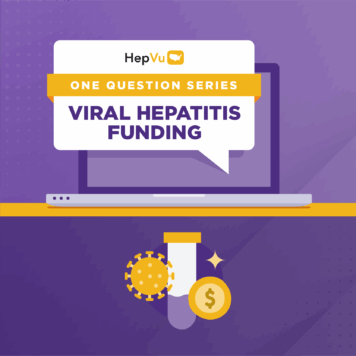Selected and summarized by Ronald O. Valdiserri, MD, MPH, Professor, Department of Epidemiology, Rollins School of Public Health, Emory University, and Co-Chair of HepVu.
Dr. Valdiserri reviews significant articles on prevention, public health, and policy advances in viral hepatitis. This month, he highlights “The Burden of Hepatitis A Outbreaks in the United States: Health Outcomes, Economic Costs, and Management Strategies.” Horn EK, Herrera-Restrepo O, Acosta AM, Simon A, Jackson B, Lucas E. Journal of Infectious Diseases 2024, July 25; 230(1): e199-218. PMID 39052742
What question(s) does this study address?
After 1995, when vaccines to prevent hepatitis A virus (HAV) infection were first licensed in the United States, the incidence of hepatitis A decreased dramatically. However, beginning in 2016, the U.S. experienced a number of large HAV outbreaks characterized by person-to-person transmission. Analysis of over 37,000 HAV cases reported between August 1, 2016, and December 31, 2020, revealed the following risk factors: injection or non-injection drug use (56%), homelessness (14%), and recent incarceration (12%) (ibid.) More recent information from the U.S. Centers for Disease Control and Prevention (CDC) indicates that an estimated 4,500 persons became infected with HAV during 2022, resulting in 118 HAV-related deaths.
Most persons infected with hepatitis A virus recover, but in some cases complications can be severe, requiring hospitalization, and may even result in death, as noted above. During the period of 2016—2023, the CDC reported that nearly 45,000 persons had been infected with HAV resulting in 27,461 (61%) hospitalizations, and 424 deaths. In light of recent hepatitis A outbreaks, Horn and her colleagues conducted a systematic literature review in order to assess health outcomes, health care resource utilization, and economic burden associated with HAV outbreaks that have occurred since 2016.
What are the major findings of this report/article?
- The authors screened over 1700 published studies and identified 33 that reported on HAV outbreak-associated health outcomes.
- Hospitalization rates in person-to-person HAV transmission outbreak investigations ranged from 41.6% to 84.8%. One national study reported an average cost of over $16,000 per HAV-related hospital admission.
- Among the studies providing details on HAV outbreak-related morbidities, the following conditions were most commonly reported: acute liver failure (1.0%-80.4%), septic shock (7.9%-43.0%), hepatic encephalopathy [i.e., brain dysfunction secondary to severe liver disease] (0.0%-7.0%), and liver transplantation (0.2%-0.6%). According to a 2020 research report (2020 US organ and tissue transplants: Cost estimates, discussion and emerging issues, Millman Research Report) the average cost of a liver transplant was $878,400.
- 26 of the 33 studies reported mortality rates, which ranged from 0% to 10.8%.
What are the implications for the prevention and control of viral hepatitis?
- This review highlighted significant clinical and economic consequences of recent HAV outbreaks among U.S. adults—outcomes that could be largely averted by increasing adult HAV vaccination rates.
- Hepatitis A vaccine is recommended for all children and for adults with a variety of risk factors (e.g., chronic liver disease, HIV infection, those who are homeless, men who have sex with men, people who use drugs, international travelers, etc.). However, HAV vaccine coverage among adults remains low. In 2021, only 8% of adults reported receiving at least one dose of the HAV vaccine.
- As noted above, people who use drugs (PWUD) are a group at high risk for HAV infection and have been recommended for vaccination since 1996, yet coverage for HAV and other vaccine-preventable diseases remains suboptimal within this group. Recent modeling suggests that programs may need to achieve at least 80% coverage in order to prevent most HAV outbreaks among people who inject drugs.
- Targeted, nontraditional outreach strategies and improved communication about the safety and effectiveness of HAV vaccines will be necessary in order to improve HAV vaccination rates among vulnerable adult populations, including persons who use drugs.




